Introduction
Welcome to the exciting world of cricket club management! Starting a cricket club can be a rewarding endeavor, whether you’re a passionate
From defining your club’s vision and assembling a dedicated team to navigating legal requirements and promoting your club, we’ve got you covered. Let’s embark on this journey together and learn how to turn your cricket club dreams into reality.
Step 1: Define Your Vision and Mission

Before diving into the logistics of starting a cricket club, it’s crucial to establish a clear vision and mission statement. This step lays the foundation for your club’s identity and purpose, guiding your decisions and actions throughout the journey.
Why is this important?
1. Alignment: Defining your vision and mission ensures that all club members, volunteers, and stakeholders are on the same page regarding the club’s objectives and values.
2. Identity: It helps distinguish your club from others and creates a unique brand identity that resonates with potential members and supporters.
3. Long-term Focus: A well-crafted vision and mission statement can keep the club focused on its long-term goals and aspirations, even during challenging times.
To get started, gather your core team and brainstorm the following:
- Club Purpose: What is the primary purpose of your cricket club? Is it to promote
- Core Values: Identify the core values that your club will uphold. These could include teamwork, sportsmanship, inclusivity, and integrity.
- Goals and Objectives: Define specific, measurable, and achievable goals for your club. Consider short-term and long-term objectives, such as the number of teams, participation levels, or tournament victories.
Once you’ve brainstormed these elements, craft a concise vision and mission statement that encapsulates your club’s purpose and values. These statements should be inspiring and resonate with potential members and supporters.
| Vision Statement | Mission Statement |
|---|---|
| To be a premier cricket club that fosters talent, teamwork, and sportsmanship, inspiring a love for cricket in our community. | Our mission is to provide a nurturing environment for cricket enthusiasts of all ages, promoting skill development, and creating a sense of belonging through the sport. |
Once you’ve defined your vision and mission, communicate them effectively to your team and potential stakeholders. These statements will serve as your club’s guiding principles as you move forward with the process of starting your cricket club.
Step 2: Assemble a Team
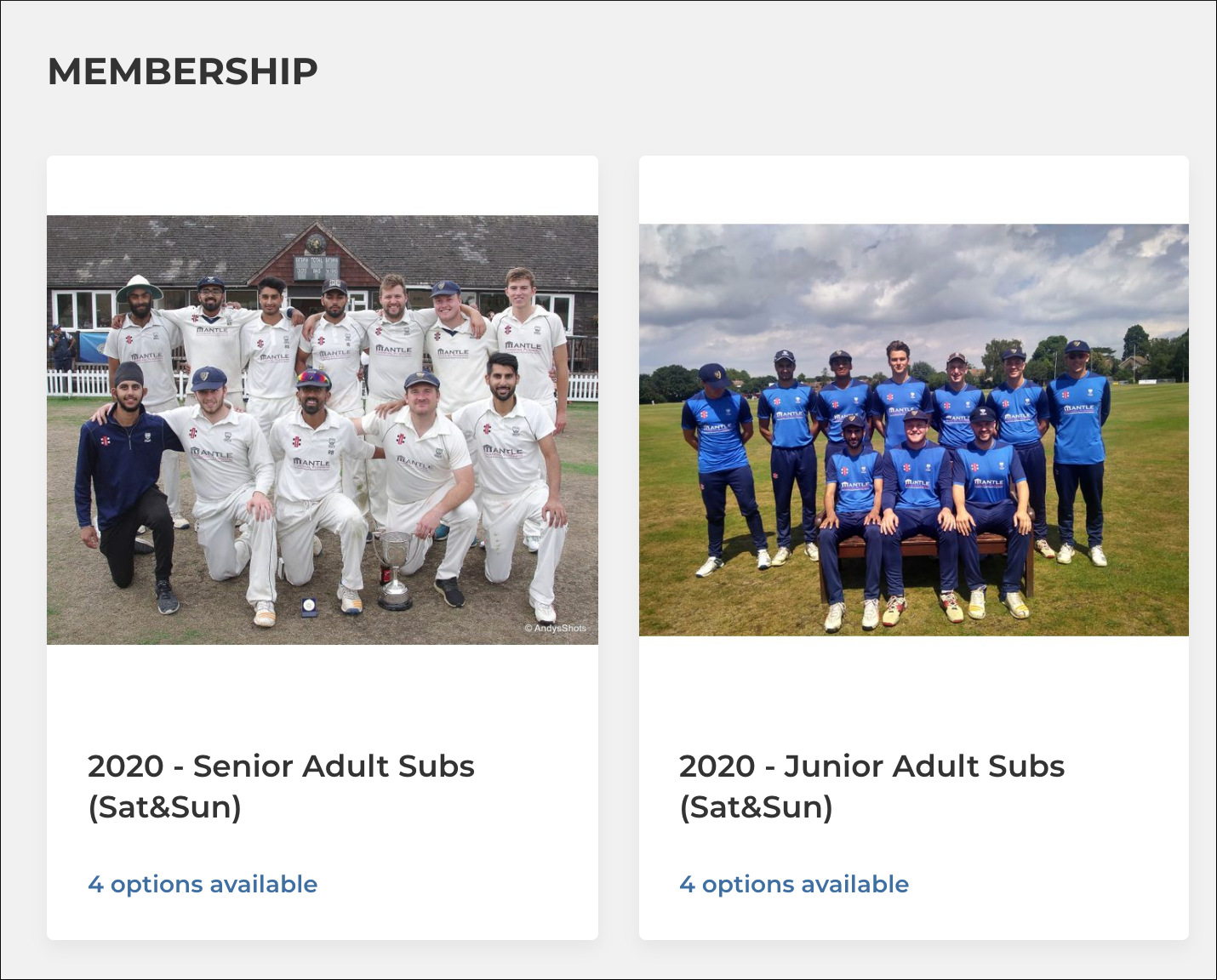
Building a successful cricket club requires more than just a passionate founder. Assembling a dedicated and capable team is essential for sharing responsibilities, managing various aspects of the club, and ensuring its long-term sustainability.
Why is this important?
1. Diverse Skill Sets: A well-rounded team with diverse skills and expertise can handle various tasks efficiently, from coaching and administration to marketing and finance.
2. Shared Responsibilities: Sharing the workload among team members reduces the burden on any single individual and fosters a sense of collective ownership.
3. Continuous Growth: A committed team can help the club evolve and grow over time, taking on new challenges and opportunities.
To assemble your club’s core team:
- Founder(s): You, as the founder, play a pivotal role in setting the club’s direction and providing leadership.
- Coaches: Recruit experienced cricket coaches who can train and develop players at different skill levels.
- Administrative Staff: Appoint individuals to handle administrative tasks such as registration, scheduling, and record-keeping.
- Treasurer: Someone with financial expertise should manage the club’s finances, budgeting, and fundraising efforts.
- Marketing and PR: Build a team responsible for promoting the club, managing social media, and organizing events.
- Volunteers: Encourage community involvement by recruiting volunteers for match days, events, and maintenance tasks.
Consider conducting interviews or assessing potential team members based on their skills, commitment, and alignment with the club’s values. It’s important to have a shared vision and a commitment to the club’s success.
Roles and Responsibilities:
Define clear roles and responsibilities for each team member. This ensures that everyone knows their tasks and can work together effectively. For example:
| Position | Responsibilities |
|---|---|
| Coach | Player training, strategy development, match preparation. |
| Marketing Manager | Promotion, social media management, event planning. |
| Treasurer | Financial management, budgeting, fundraising coordination. |
Regular meetings and open communication channels within your team are vital for collaboration and problem-solving. Encourage feedback and ensure that everyone is working toward the common goal of making your cricket club a success.
Remember, assembling the right team is the foundation of your cricket club’s journey, and their dedication will be key to achieving your club’s vision and mission.
Step 3: Legal Requirements
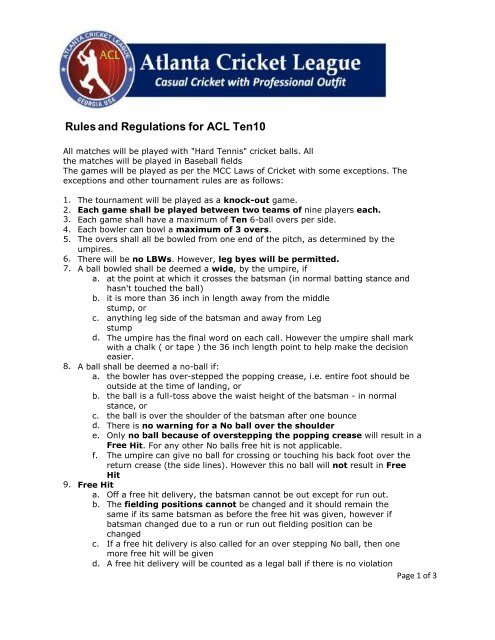
Ensuring that your cricket club complies with all legal requirements is a crucial step in its establishment. Failing to do so can lead to complications and legal issues down the road. Here’s a comprehensive guide to the legal aspects of starting a cricket club.
1. Club Registration:
Begin by registering your cricket club as a legal entity. This could be a non-profit organization, a social club, or any other suitable legal structure. Consult with legal experts or your local authorities to determine the most appropriate legal form for your club.
2. Insurance:
Acquire liability insurance for your cricket club. This will protect the club, its members, and participants in case of accidents or injuries during matches and practices. Seek advice from insurance providers who specialize in sports clubs.
3. Permits and Licensing:
Depending on your location, you may need permits and licenses to use specific facilities, host events, or serve alcohol if your club plans to do so. Check with local authorities to understand the requirements and apply for the necessary permits.
4. Contracts and Agreements:
When dealing with coaches, players, volunteers, or sponsors, it’s essential to have written contracts or agreements in place. These documents should outline the terms and conditions of engagement, responsibilities, and expectations.
5. Child Protection:
If your club involves minors, implement child protection policies. Conduct background checks on coaches and volunteers who work with children, and establish guidelines for their safety and well-being.
6. Taxation:
Understand the tax obligations of your cricket club. Depending on your country’s tax laws, non-profit organizations may have tax benefits, but they also have specific reporting requirements. Consult with an accountant or tax advisor for guidance.
7. Intellectual Property:
If your club creates logos, branding materials, or other intellectual property, consider trademarking or copyrighting them to protect your club’s identity and assets.
8. Bylaws and Constitutions:
Develop club bylaws or a constitution that outlines how the club operates, including membership criteria, elections, and dispute resolution mechanisms. Ensure that all members are aware of and agree to these governing documents.
9. Financial Management:
Establish transparent financial management practices, including regular audits and reporting. Keep accurate records of income, expenses, and donations, as required by tax authorities.
10. Health and Safety:
Implement health and safety protocols, especially if your club owns or manages its own facilities. This includes measures for equipment safety, emergency response plans, and first aid training.
It’s essential to seek legal advice or consult with local authorities throughout this process to ensure full compliance with all relevant laws and regulations. Focusing on legal requirements early on will provide a solid legal foundation for your cricket club and help you avoid potential legal issues in the future.
Step 4: Fundraising and Budgeting
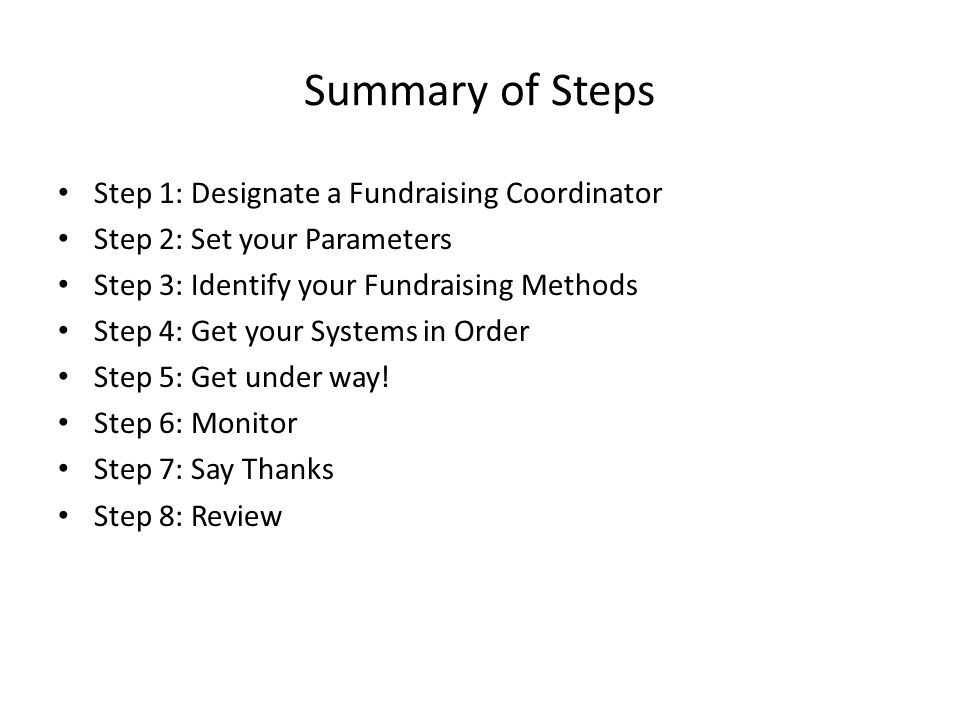
Fundraising and budgeting are critical components of running a successful cricket club. Developing a sound financial plan and securing funding sources will ensure that your club can operate smoothly and achieve its goals.
1. Create a Budget:
Start by creating a detailed budget that outlines your club’s income and expenses. Identify all potential costs, including equipment, facility rental, coaching fees, marketing expenses, and administrative costs. Be as comprehensive as possible.
| Expense Category | Estimated Cost |
|---|---|
| Equipment | $5,000 |
| Facility Rental | $2,000 |
| Coaching Fees | $3,500 |
| Marketing | $1,500 |
| Administrative Costs | $1,000 |
2. Diversify Funding Sources:
Relying on a single source of funding can be risky. Explore various fundraising avenues, including:
- Membership Fees: Charge reasonable membership fees for players and supporters.
- Sponsorships: Approach local businesses, cricket equipment manufacturers, and community organizations for sponsorships.
- Grants: Research and apply for grants from sports organizations, government agencies, and charitable foundations.
- Donations: Create online donation platforms and encourage supporters to contribute to the club’s cause.
- Fundraising Events: Organize events like charity matches, fun runs, or auctions to raise funds.
3. Fundraising Campaigns:
Plan and execute fundraising campaigns effectively. Set clear goals, leverage social media and email marketing, and engage your community in your fundraising efforts. Highlight the club’s mission and the impact of donations to attract support.
4. Financial Management:
Appoint a treasurer or finance committee responsible for managing club finances. Ensure transparent bookkeeping and financial reporting. Regularly review your budget to track income and expenses and make necessary adjustments.
5. Seek In-Kind Donations:
Don’t underestimate the value of in-kind donations. Approach local businesses for equipment, uniforms, or facilities sponsorship. This can significantly reduce your expenses.
6. Long-Term Financial Planning:
Think beyond immediate needs. Develop a long-term financial plan to secure the club’s sustainability. Consider creating a reserve fund for unexpected expenses or future investments.
7. Acknowledge Supporters:
Show gratitude to your supporters, whether they are sponsors, donors, or volunteers. Recognize their contributions through public acknowledgments, thank-you notes, or special events.
Remember that successful fundraising and budgeting require ongoing effort and adaptability. Regularly review your financial strategies, adapt to changing circumstances, and stay committed to your club’s financial health. With a well-executed financial plan, your cricket club can thrive and fulfill its mission.
Step 5: Find a Suitable Location
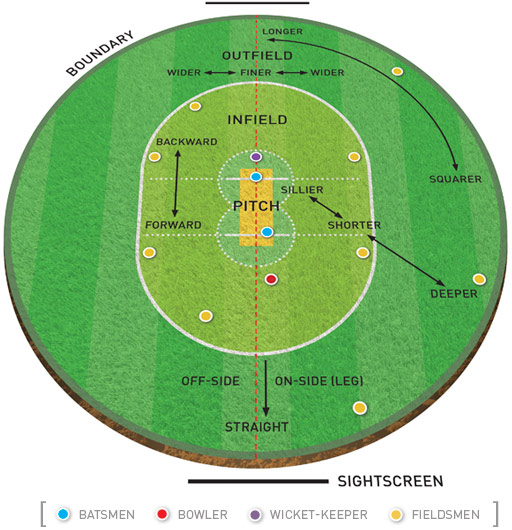
Choosing the right location for your cricket club is a pivotal decision that can significantly impact its success. The location determines accessibility, facilities, and the overall experience for club members and players. Here’s a comprehensive guide on finding a suitable location for your cricket club:
1. Accessibility and Convenience:
Consider the convenience of the location for your target audience, including players, members, and supporters. Look for a location that is easily accessible by public transportation and has ample parking space for those who drive.
2. Cricket Facilities:
Find a location that offers cricket-specific facilities. This includes cricket pitches, nets for practice, changing rooms, and storage for equipment. Ensure that the playing surface is well-maintained and meets the required standards.
3. Available Space:
Assess the available space and layout of the location. It should accommodate the number of players and teams you plan to have. Ensure that there is enough space for spectators, seating, and social areas.
4. Cost and Budget:
Evaluate the cost associated with renting or leasing the location. It should fit within your club’s budget. Consider negotiating terms and exploring sponsorship or partnership opportunities with the property owner to reduce costs.
5. Local Regulations:
Research local zoning regulations and permits required for operating a cricket club in the chosen location. Ensure that your club complies with all legal requirements and obtain any necessary approvals.
6. Community Engagement:
Engage with the local community and neighbors. Discuss your plans and address any concerns they may have regarding noise, traffic, or other potential disruptions. Building positive relationships with the community can lead to support for your club.
7. Future Growth:
Consider the potential for growth and expansion. The location should have room for your club to grow in terms of membership, facilities, and activities in the future.
8. Accessibility to Amenities:
Check if the location is near amenities like restaurants, medical facilities, and stores, which can be beneficial for club members and visitors.
9. Safety and Security:
Ensure that the chosen location is safe and secure for both players and spectators. Evaluate lighting, emergency access, and security measures in place.
10. Environmental Considerations:
Be environmentally conscious. Consider the impact of your club’s activities on the environment and implement eco-friendly practices if possible.
After carefully assessing these factors, you’ll be better equipped to make an informed decision about the location of your cricket club. Keep in mind that finding the right location may take time, but it’s a crucial step toward creating a welcoming and successful club.
Step 6: Equipment and Facilities

Proper equipment and facilities are the backbone of a successful cricket club. Ensuring that you have the right gear for players and well-maintained facilities for training and matches is crucial. Here’s a detailed guide on equipment and facilities for your cricket club:
1. Cricket Equipment:
Invest in high-quality cricket equipment to provide your players with the tools they need to excel. This includes:
- Bats: Purchase a variety of cricket bats suitable for different playing styles and age groups.
- Balls: Stock up on cricket balls, both red and white, suitable for practice and matches.
- Pads and Gloves: Ensure you have protective gear like batting pads, wicket-keeping gloves, and batting gloves in various sizes.
- Helmets: Safety should be a top priority, so invest in helmets for batsmen and wicket-keepers.
- Clothing and Uniforms: Arrange uniforms for your club members, including jerseys, trousers, and caps.
- Fielding and Training Equipment: Don’t forget essential items like stumps, bails, cones, and fielding equipment for practice sessions.
2. Practice Nets:
Set up practice nets for batting and bowling drills. Ensure the nets are well-maintained and regularly inspected for safety. Nets are essential for skill development and preparation.
3. Ground Maintenance:
Regularly maintain your cricket pitch and outfield. Proper pitch preparation is crucial for fair gameplay. Invest in groundskeeping equipment, such as rollers, pitch covers, and turf maintenance tools.
4. Changing Rooms and Amenities:
Provide clean and well-equipped changing rooms for players. Facilities like showers, toilets, and storage lockers are essential for player comfort and hygiene.
5. Scoreboards and Umpire Equipment:
Install scoreboards for matches and ensure umpires have the necessary equipment, including balls, clickers, and protective gear.
6. First Aid and Medical Supplies:
Have a well-stocked first aid kit on hand for minor injuries. Train staff and volunteers in basic first aid, and have an emergency action plan in place for more serious incidents.
7. Ground Safety:
Ensure that the playing field is safe for all participants. This includes inspecting for hazards, maintaining boundary markers, and addressing any uneven surfaces or holes.
8. Facility Accessibility:
Make sure your facilities are accessible to all, including individuals with disabilities. Install ramps and provide accommodations as needed.
9. Equipment Maintenance:
Implement a maintenance schedule for all cricket equipment and facilities. Regular upkeep ensures longevity and safety.
10. Budget Considerations:
Allocate a portion of your club’s budget for equipment and facility maintenance. Keep track of expenses to ensure you can replace or upgrade equipment when necessary.
By focusing on acquiring the right equipment and maintaining top-notch facilities, your cricket club can create a conducive environment for player development and enjoyable matches. Prioritize safety and quality to set your club on a path to success.
Step 7: Recruitment and Player Development
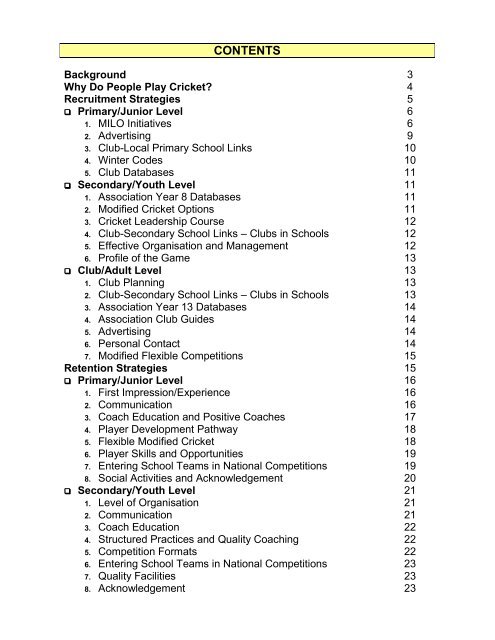
Recruitment and player development are at the heart of building a successful cricket club. Attracting talented players, nurturing their skills, and fostering a sense of camaraderie are essential for long-term success. Here’s a comprehensive guide to recruitment and player development for your cricket club:
1. Talent Identification:
Identify local talent by attending school, college, and community cricket matches. Look for players who demonstrate skill, dedication, and a passion for the sport.
2. Youth Programs:
Establish youth programs and cricket academies to nurture young talent. Offer coaching, equipment, and facilities to young players to encourage their development.
3. Open Trials:
Organize open trials or tryouts to give aspiring players an opportunity to showcase their skills. Publicize these events through local media and social networks.
4. Coaching Staff:
Hire experienced and certified cricket coaches to provide structured training. Develop coaching programs that focus on skill development, fitness, and game strategy.
5. Player Progression:
Implement a player progression system that allows individuals to move from youth teams to senior teams as they develop their skills and gain experience.
6. Fitness and Conditioning:
Emphasize the importance of fitness and conditioning. Develop training routines that improve strength, endurance, and agility, tailored to cricket‘s specific demands.
7. Sportsmanship and Values:
Instill sportsmanship and values like fair play, teamwork, and respect for opponents. These qualities contribute to a positive club culture.
8. Regular Matches and Tournaments:
Organize regular matches and tournaments for players to gain experience and showcase their skills. Encourage participation in local and regional competitions.
9. Mentorship Programs:
Establish mentorship programs where experienced players mentor and guide younger or less-experienced teammates. This fosters a sense of community and knowledge sharing.
10. Recruitment Outreach:
Promote your club through various channels, including social media, local events, and cricket forums. Highlight your club’s values, achievements, and opportunities for players.
11. Inclusivity:
Ensure that your recruitment efforts are inclusive and welcoming to players of all backgrounds, genders, and skill levels. Diversity can enrich your club’s culture and talent pool.
12. Continuous Evaluation:
Regularly evaluate player performance, both individually and as a team. Provide constructive feedback and set goals for improvement.
13. Celebrate Achievements:
Celebrate individual and team achievements, no matter how small. Recognition boosts morale and motivation among players.
14. Player Well-Being:
Pay attention to player well-being, including physical and mental health. Encourage open communication and provide support when needed.
15. Long-Term Vision:
Have a long-term vision for player development. Invest in infrastructure, coaching, and resources that contribute to the growth of your club’s talent pool over time.
Recruitment and player development require dedication, patience, and a commitment to nurturing talent. By following these guidelines, your cricket club can attract, develop, and retain skilled players who contribute to the club’s success on and off the field.
Step 8: Organize Tournaments and Matches
![Organise a Cricket Tournament Successfully [Step-by-Step Guide] | by Manoj Iragavarapu | Medium](https://whatcricket.com/wp-content/plugins/BlogPostBaba/images/2023/09/23/650eea9e3cada.jpeg)
Organizing tournaments and matches is the lifeblood of a cricket club. It provides your players with competitive opportunities and engages the community. Effective planning and execution are essential to ensure successful events. Here’s a comprehensive guide on how to organize tournaments and matches for your cricket club:
1. Schedule Planning:
Plan your tournament and match schedule well in advance. Consider factors like local cricket seasons, weather conditions, and the availability of players and facilities.
2. Fixture Creation:
Create a fixture or match schedule that outlines dates, venues, and opponents. Ensure it’s accessible to all players and stakeholders.
3. Umpires and Officials:
Arrange qualified umpires and officials for matches. Ensure they are well-versed in the rules and regulations of cricket.
4. Registration and Fees:
Set up a registration process for teams and players. Collect fees to cover match expenses, such as umpire fees, ground rentals, and equipment costs.
5. Facilities:
Secure appropriate grounds and facilities for matches. Ensure the pitch is well-maintained, and the outfield is safe and suitable for play.
6. Match Promotion:
Promote your matches through various channels, including social media, local newspapers, and your club’s website. Build anticipation and excitement among the community.
7. Sponsorship:
Seek sponsorships from local businesses to cover expenses and potentially offer prizes or awards. Acknowledge sponsors in match promotional materials.
8. Matchday Operations:
Ensure smooth matchday operations, including setting up boundaries, providing refreshments, and having a medical kit on hand for emergencies.
9. Scorekeeping:
Appoint scorekeepers or use scoring software to maintain accurate records of each match. Share scores and statistics with players and fans.
10. Match Regulations:
Establish clear match regulations, including rules for rain delays, tiebreakers, and code of conduct for players and spectators.
11. Trophies and Awards:
Consider presenting trophies, awards, or certificates to recognize outstanding players, teams, and contributions to the club’s success.
12. Post-Match Activities:
Organize post-match activities or social gatherings to foster camaraderie among players and supporters. This can include award ceremonies, team dinners, or community events.
13. Evaluation and Feedback:
After each tournament or match, gather feedback from players, officials, and spectators. Use this feedback to improve future events.
14. Continual Promotion:
Promote your club and upcoming matches throughout the year, maintaining community interest and engagement.
15. Adaptability:
Be flexible and adaptable to unforeseen circumstances, such as weather-related delays or changes in scheduling.
Organizing tournaments and matches is not only about competition but also about creating memorable experiences for players and engaging the community. By following these guidelines and focusing on quality event management, your cricket club can build a strong reputation and foster a thriving cricket culture.
Step 9: Promotion and Marketing

Promotion and marketing are essential for raising awareness about your cricket club, attracting new members, and engaging the community. Effective promotion can help your club grow its fan base, secure sponsorships, and create a strong presence in the cricketing world. Here’s a comprehensive guide on how to promote and market your cricket club:
1. Club Branding:
Develop a strong and memorable club logo, colors, and branding materials. Consistency in branding across all platforms creates a professional image.
2. Website:
Create an informative and user-friendly club website. Include details about fixtures, player profiles, news, and contact information. Regularly update the website to keep it current.
3. Social Media:
Utilize social media platforms such as Facebook, Twitter, and Instagram to connect with fans, share match updates, and post engaging content. Interact with followers and respond to comments and messages promptly.
4. Email Marketing:
Build an email list of club members, supporters, and sponsors. Send regular newsletters with updates, match schedules, and club news. Email marketing can help maintain engagement.
5. Community Engagement:
Engage with the local community through events, school visits, and cricket clinics. Participate in local festivals and parades to raise your club’s profile.
6. Sponsorship Proposals:
Create professional sponsorship proposals highlighting the benefits of partnering with your club. Reach out to local businesses, cricket equipment manufacturers, and potential sponsors.
7. Merchandise:
Sell club merchandise such as jerseys, caps, and scarves. Fans love to support their team by wearing branded gear.
8. Matchday Experience:
Enhance the matchday experience by offering activities like face painting, food stalls, and giveaways. Create a vibrant and enjoyable atmosphere that encourages repeat attendance.
9. Media Coverage:
Contact local media outlets, including newspapers, radio stations, and TV channels. Share press releases and match results to secure media coverage and interviews.
10. Online Streaming:
Consider streaming your matches online, making them accessible to a wider audience. Promote the streaming schedule on your website and social media.
11. Fan Engagement:
Organize fan engagement activities such as contests, quizzes, and match predictions on social media. Reward active fans with club merchandise or exclusive access.
12. Partnerships:
Collaborate with local sports organizations, schools, and other cricket clubs to cross-promote events and activities. Partnerships can expand your reach.
13. Analyze Data:
Use analytics tools to track website traffic, social media engagement, and email campaign performance. Analyzing data can help refine your marketing strategies.
14. Testimonials and Reviews:
Encourage satisfied members and fans to leave positive testimonials and reviews on your website or social media pages. Positive feedback builds credibility.
15. Consistency:
Maintain a consistent online presence and keep your audience informed. Regular updates and engagement demonstrate commitment to your fans.
Effective promotion and marketing can elevate your cricket club’s visibility and impact. By implementing these strategies, you can attract more supporters, secure sponsorships, and create a vibrant community around your club.
Frequently Asked Questions (FAQ)
1. What are the basic requirements to start a cricket club?
Starting a cricket club requires careful planning and organization. Here are the basic requirements you need to consider:
- A group of enthusiastic individuals interested in cricket.
- A suitable location such as a local park or sports complex with a cricket pitch.
- Necessary cricket equipment including bats, balls, stumps, and protective gear.
- Access to facilities like changing rooms, practice nets, and seating for spectators.
- Club rules and regulations outlining membership criteria, conduct, and responsibilities.
- Funding or sponsorship to cover expenses related to equipment, facilities, and events.
2. How can I attract sponsors for my cricket club?
Attracting sponsors for your cricket club involves showcasing the value and visibility they can gain through association. Here are some effective strategies:
- Prepare a professional proposal: Create a detailed document outlining your club’s activities, achievements, and future plans. Highlight the benefits sponsors will receive in return for their support.
- Local businesses and community engagement: Approach local businesses and community organizations. Many companies are willing to sponsor local sports clubs as a part of their corporate social responsibility initiatives.
- Offer advertising opportunities: Provide sponsors with advertising space on your club’s website, team jerseys, and event banners. Increased visibility can be a strong incentive for sponsors.
- Host fundraising events: Organize fundraising events such as charity matches, tournaments, or fun days. Involve the community and local businesses, offering them opportunities to sponsor these events.
3. What age groups can join the cricket club?
Cricket clubs often cater to various age groups, ensuring inclusivity and development opportunities for players of all ages. Common age categories in cricket clubs include:
| Age Group | Eligibility |
|---|---|
| Youth | Under 16 years |
| Junior | 16 to 18 years |
| Senior | Above 18 years |
Clubs may also have specific categories for beginners, veterans, and women players, fostering a diverse and inclusive cricketing community.
Conclusion
Starting a cricket club is a fulfilling endeavor that not only promotes the sport but also builds a sense of community and teamwork among its members. Through this journey, you’ve learned the fundamental steps to establish your own cricket club and foster a love for the game in your local area.
